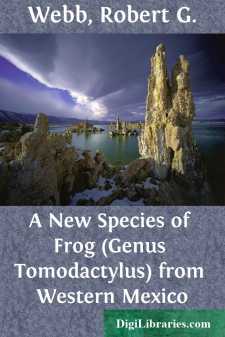Categories
- Antiques & Collectibles 13
- Architecture 36
- Art 48
- Bibles 22
- Biography & Autobiography 813
- Body, Mind & Spirit 142
- Business & Economics 28
- Children's Books 17
- Children's Fiction 14
- Computers 4
- Cooking 94
- Crafts & Hobbies 4
- Drama 346
- Education 46
- Family & Relationships 57
- Fiction 11829
- Games 19
- Gardening 17
- Health & Fitness 34
- History 1377
- House & Home 1
- Humor 147
- Juvenile Fiction 1873
- Juvenile Nonfiction 202
- Language Arts & Disciplines 88
- Law 16
- Literary Collections 686
- Literary Criticism 179
- Mathematics 13
- Medical 41
- Music 40
- Nature 179
- Non-Classifiable 1768
- Performing Arts 7
- Periodicals 1453
- Philosophy 64
- Photography 2
- Poetry 896
- Political Science 203
- Psychology 42
- Reference 154
- Religion 513
- Science 126
- Self-Help 84
- Social Science 81
- Sports & Recreation 34
- Study Aids 3
- Technology & Engineering 59
- Transportation 23
- Travel 463
- True Crime 29
Description of a New Softshell Turtle From the Southeastern United States
by: Robert G. Webb
Description:
Excerpt
Examination of softshell turtles allied to Trionyx muticus from the southeastern United States discloses the presence of an undescribed subspecies inhabiting river systems of the Gulf Coast.
The author is indebted to Mr. Roger Conant for constructive criticism of the manuscript. I am grateful also to many fellow students for assistance in field work or for other courtesies, especially William E. Brode, Franklin Sogandares-Bernal, Ernest A. Liner, Donald W. Tinkle, Paul K. Anderson, and John K. Greer. The photographs were provided through the cooperation of Roger and Isabelle Hunt Conant and John M. Legler.
Collections from which specimens were obtained are as follows: TU (Tulane University), USNM (United States National Museum), MCZ (Museum of Comparative Zoology, Harvard College), CNHM (Chicago Natural History Museum), KU (Museum of Natural History, University of Kansas), UI (Museum of Natural History, University of Illinois).
Measurements (in millimeters) were made with a Vernier caliper and a metal tape; those of the holotype were made to the nearest one-tenth millimeter. Plastral length was measured from the posterior edge of the plastron to the anteriormost edge of the ventral surface; other measurements were maximal. Depth of shell was taken only on hatchlings and an immature female. Hatchlings were arbitrarily designated as specimens having plastrons shorter than 44 mm; sex of all specimens except adult males was determined by dissection unless otherwise noted.
Trionyx muticus calvatus new subspecies
Gulf Coast Smooth Softshell
Amyda mutica (in part), Stejneger, Bull. Mus. Comp. Zool., 94(1):23-24, 1944.
Amyda muticus (in part), Cook, Jour. Mississippi Acad. Sci., 1941-1947, p. 185, 1946.
Trionyx muticus Anderson, Copeia, 3:211, August 28, 1958.
Holotype.—UI 31071, hatchling, sex undetermined, from the Pearl River, Roses Bluff, 14 miles northeast Jackson, Rankin County, Mississippi; obtained by William F. Childers on August 25, 1952 (Plate 1).
Paratypes.—A total of 20 alcoholic specimens: TU 17301, hatchling male (Plate 2). TU 17302-.1, 16682, three hatchling females, and TU 13473, adult female, from the Escambia River, 2 miles east and 1 mile north of Century, Escambia County, Florida; TU 17306, adult female, from the Pearl River, 9 miles south of Monticello, Lawrence County, Mississippi; USNM 7655, hatchling, sex undetermined, and KU 47117-19, three adult males, from the Pearl River, 1 mile south to 4 miles north of Monticello, Lawrence County, Mississippi; TU 17303-.4, 17304-.3, five hatchling males and four hatchling females, from the Pearl River, Varnado, Washington Parish, Louisiana; TU 17305, immature female, no data.
Diagnosis and definition.—A subspecies of softshell turtle most closely allied to Trionyx muticus muticus but differing from that subspecies in having: (1) a juvenal pattern of large, circular spots, (2) no stripes on dorsal surface of snout, and (3) postocular stripe with thick, black borders immediately behind eye in adult males. T. m. calvatus resembles T. m. muticus, and differs from the several subspecies of Trionyx spinifer in having: (1) no enlarged tubercles on anterior edge of carapace, (2) no ridge projecting from nasal septum, and (3) a smooth dorsal surface on carapace in adult males....



